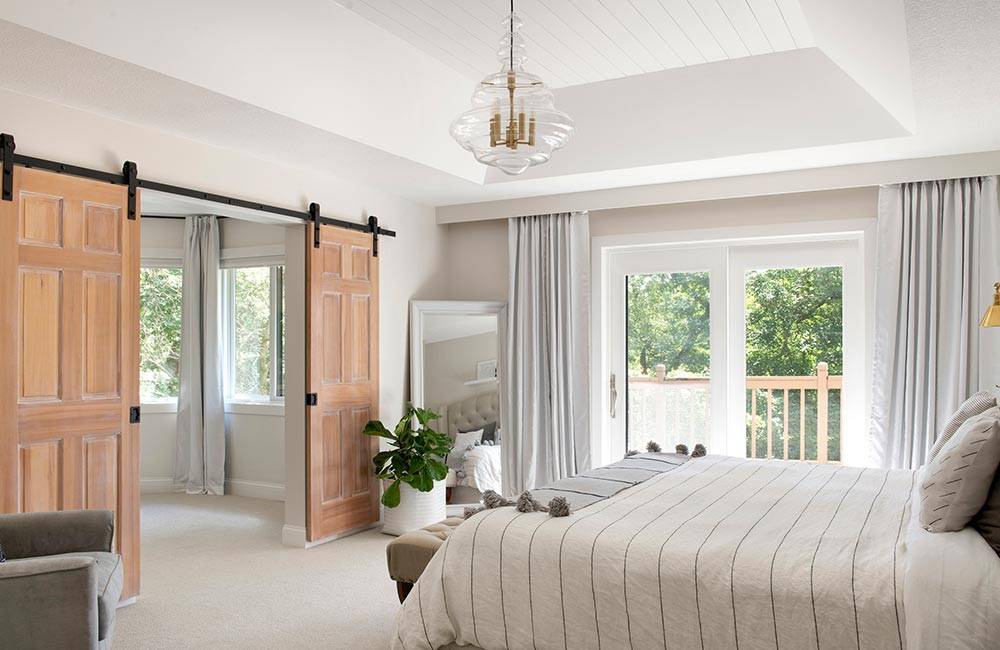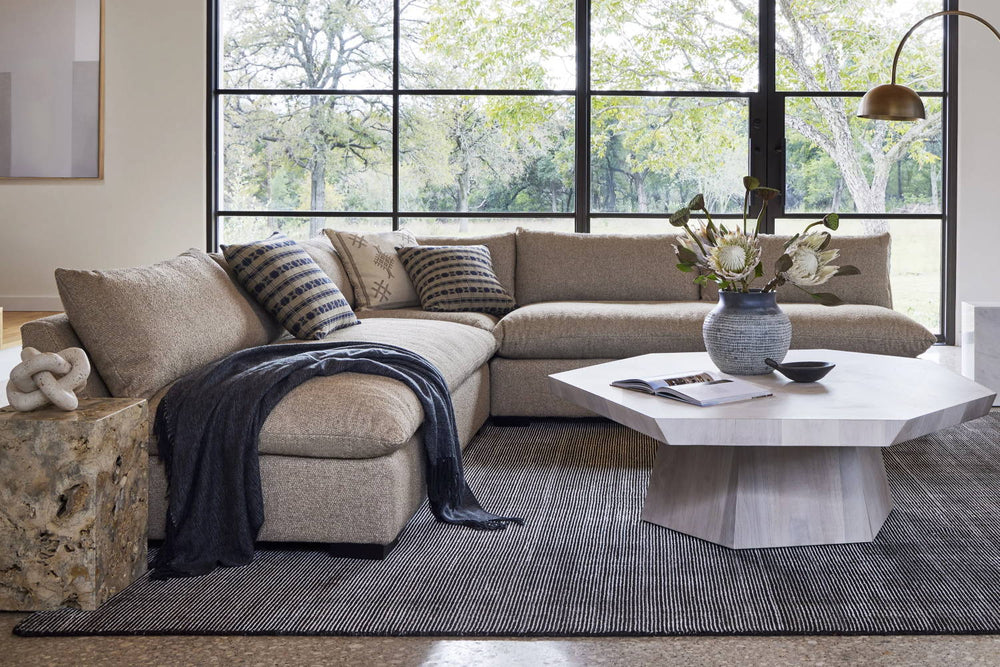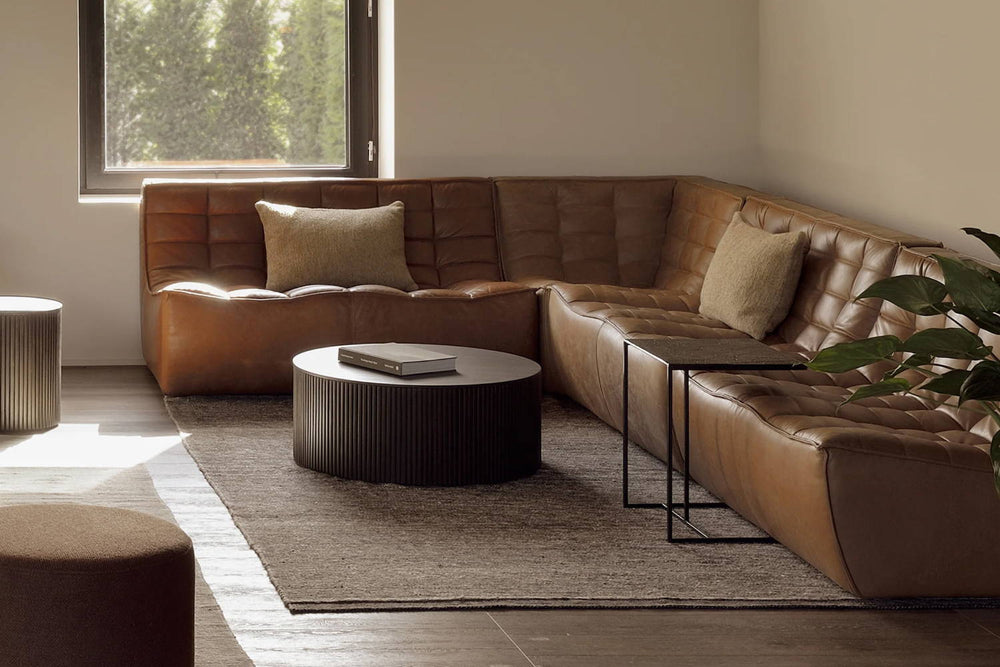Decorating your living room walls can transform the heart of your home, turning blank canvases into expressions of style and personality. Whether you’re drawn to minimalist designs or crave a splash of vibrant color, the possibilities are endless. From art and photographs to creative shelving and textured finishes, your living room walls offer a unique opportunity to reflect your tastes and create an inviting atmosphere. Here we’ll provide you with inspiration to help you elevate your living space with ideas that range from the timeless to trendy, ensuring every glance around your room feels fresh and filled with personality.
Planning Your Wall Decor
Planning your wall decor involves thoughtful consideration of what to display and how to arrange it to create a harmonious and visually appealing space. Here are some key ideas to help you get started:
What to Put on Living Room Walls:
- Family Photos: Personalize your living room with cherished memories by creating a gallery wall of family photos. Choose a mix of candid shots and formal portraits to add variety and emotion to your display.
- Artwork and Prints: Incorporate a selection of artwork and prints that reflect your taste and complement your living room's color scheme. This can include anything from abstract pieces to landscape paintings or even typography art.
- Shelving: Add functional and decorative shelving to your living room walls. Shelves can be used to display books, small plants, sculptures, and other decorative items. Floating shelves, in particular, offer a sleek and modern look.
- Textiles & Tapestries: Introduce warmth and texture to your walls with textile tapestries. These can range from intricate woven designs to simple macramé hangings. Tapestries can soften the space and add a cozy, bohemian touch.
- Cohesive Gallery Wall: Combine family photos, artwork, and prints to create a cohesive gallery wall. Use frames of varying sizes and styles, but maintain a consistent color palette or theme to unify the arrangement.
How to Decorate a Living Room Wall with Pictures:
- Grid Pattern: Arrange your frames in a symmetrical grid pattern for a clean and organized look. Measure the spaces between frames carefully to ensure even spacing, and use a level to keep everything aligned.
- Organic Pattern: For a more relaxed and dynamic feel, arrange your frames in an organic pattern. Start with the largest piece at the center and build outwards, mixing different sizes and orientations. This approach adds visual interest and allows for more flexibility.
- Minimalist Gallery Walls: For a sophisticated and modern look, consider a minimalist gallery wall. Choose a few impactful pieces and give them room to breathe by spacing them out. Opt for sleek, simple frames and a neutral color palette to maintain a clean and elegant aesthetic.
By thoughtfully selecting and arranging your wall decor, you can create a living room that is not only stylish but also a true reflection of your personality and experiences. Whether you prefer a vibrant gallery wall filled with memories or a minimalist arrangement of curated art, the key is to balance visual appeal with personal significance.
Mirrors
Using mirrors on living room walls can significantly enhance the space by adding light, creating the illusion of depth, and serving as stylish focal points. Here are some tips on how to effectively use mirrors in your living room decor:
1. Create an Illusion of Space:
- Large Mirrors: Place a large mirror on one of the main walls to make the room appear larger. Full-length or oversized mirrors are particularly effective in small or narrow living rooms.
- Opposite Windows: Hang mirrors opposite windows to reflect natural light and scenery, which can brighten the room and create a more open feel.
2. Enhance Light:
- Reflect Light: Position mirrors to reflect light from lamps or chandeliers, enhancing the overall brightness of the room. This is especially useful in rooms with limited natural light.
- Mirrored Furniture: Consider using mirrored furniture, such as coffee tables or side tables, to add subtle reflective surfaces that amplify light.
3. Create Focal Points:
- Statement Mirrors: Use a large statement mirror with a decorative frame as the focal point above a fireplace, sofa, or console table. Ornate, geometric, or uniquely shaped mirrors can draw attention and add character.
- Mirror Gallery Wall: Arrange a collection of smaller mirrors in different shapes and sizes to create an eclectic gallery wall. Ensure the frames complement each other to maintain a cohesive look.
4. Add Decorative Elements:
- Mirrored Wall Panels: Install mirrored wall panels or tiles for a dramatic and contemporary effect. These can be used on an entire wall or as an accent in specific areas.
- Mirrored Accents: Incorporate mirrors with unique designs, such as sunburst or mosaic styles, to add a decorative touch that doubles as art.
5. Consider Placement:
- Height and Angles: Hang mirrors at eye level to ensure they are functional and aesthetically pleasing. Consider the angle at which they will reflect light and objects within the room.
- Avoid Clutter: Be mindful of what the mirror reflects. Avoid placing mirrors where they might reflect cluttered or less attractive areas of the room.
6. Use Mirrors to Highlight Features:
- Highlight Art and Decor: Position mirrors to reflect and highlight other decorative elements in the room, such as artwork, sculptures, or architectural features.
- Behind Shelving: Place mirrors behind open shelving or within built-ins to add depth and highlight displayed items.
By strategically using mirrors, you can enhance the aesthetics of your living room, making it feel more spacious, bright, and stylish. Whether you opt for a grand statement piece or a creative arrangement of smaller mirrors, the reflective quality can transform the ambiance of your space.
Wall Art
Adding wall art to your living room walls is a fantastic way to inject personality, color, and texture into your space. Here's how you can effectively incorporate different types of wall art, including wood and metal art, as well as art prints:
Wood Art:
- Natural and Rustic: Wooden wall art can range from carved panels and wooden sculptures to reclaimed wood designs. Natural wood tones and rustic finishes add warmth and a touch of nature to your living room.
- Geometric Designs: Modern wooden wall art often features geometric patterns or abstract shapes. These pieces can be stained, painted, or left in their natural state to fit various decor styles.
- Functional Pieces: Consider multifunctional wooden art, such as wall-mounted shelves with artistic designs, which combine beauty with utility.
Metal Art:
- Industrial Chic: Metal wall art can introduce an industrial or modern look to your space. Pieces might include metal sculptures, abstract designs, or intricate cut-out patterns.
- Mixed Materials: Metal art often pairs well with other materials like wood or glass, creating a mixed-media piece that adds depth and interest to your decor.
- Metallic Finishes: Explore different finishes such as brushed nickel, copper, or wrought iron to find a look that complements your living room’s style.
Art Prints:
- Endlessly Versatile: Art prints are a versatile and budget-friendly way to add personality to your living room. They come in a wide variety of styles, from classic paintings to contemporary digital art.
- Gallery Walls: Create a cohesive gallery wall by mixing and matching art prints in different sizes and frames. Stick to a theme or color palette to maintain a unified look.
- Personalization: Choose prints that reflect your interests, whether it's botanical illustrations, abstract designs, or inspirational quotes. Customizable prints or prints of famous artworks can also make your space feel uniquely yours.
Alternative Wall Decor
When it comes to decorating your living room walls, shelving and tapestries offer unique and versatile options that go beyond traditional artwork. Let's explore how you can use shelving and tapestries to enhance your living space:
Shelving:
- Functional Display: Shelving serves as both functional storage and decorative display. Choose shelves that complement your living room's aesthetic, whether it's rustic wooden shelves, sleek metal ones, or minimalist floating shelves.
- Showcase Collectibles: Use shelves to showcase your favorite collectibles, such as books, sculptures, vases, or small plants. Mix and match items of different heights, textures, and colors to create visual interest.
- Create a Gallery Wall: Arrange a collection of shelves in various sizes and shapes to create a gallery wall effect. This allows for a dynamic display of objects while maximizing vertical space.
- Versatile Arrangements: Experiment with different arrangements, such as asymmetrical layouts or alternating shelf heights, to add visual intrigue to your walls.
- Functional Space Divider: Install shelves as a functional space divider in open-plan living areas. This not only defines separate zones but also provides additional storage and display space.
Tapestries:
- Textural Interest: Tapestries add texture and warmth to your living room walls, softening the space and creating a cozy atmosphere. Choose tapestries with intricate weaves, bold patterns, or tactile materials to make a statement.
- Artistic Expression: Tapestries serve as a unique form of artistic expression, offering a wide range of designs, from traditional tapestries depicting landscapes or historical scenes to modern abstract interpretations.
- Acoustic Benefits: Tapestries can improve acoustics in your living room by absorbing sound and reducing echoes. This is particularly beneficial in large, open spaces with hard surfaces.
- Easy Installation: Tapestries are easy to hang and can be easily swapped out or rotated to refresh your living room decor. Hang them using decorative rods, hooks, or tension rods for a polished look.
- Versatile Decor: Tapestries are versatile decor elements that can be used in various ways, such as wall hangings, bedspreads, or even makeshift curtains. Their flexibility allows you to experiment with different placements and arrangements.
By incorporating shelving and tapestries into your living room decor, you can add both style and functionality to your walls, creating a space that is visually appealing and uniquely reflective of your personality. Experiment with different designs, arrangements, and placements to find the perfect balance between form and function.
Wallpaper & Paint
Choosing the right wallpaper and paint for your living room is essential for creating the desired ambiance and style. Here's how to make the best decisions:
Wallpaper:
- Pattern and Design: Consider the overall style of your living room. Whether you prefer classic, modern, or eclectic decor, there's a wallpaper pattern to suit your taste. Opt for geometric prints, floral motifs, retro designs, or textured wallpapers for added depth.
- Color Scheme: Choose wallpaper colors that complement your existing furnishings and decor. If you have bold furniture pieces, consider a neutral or subtle wallpaper to balance the room. Conversely, a vibrant wallpaper can become a focal point in a more minimalist space.
- Texture and Finish: Textured wallpapers add tactile interest to your walls, creating depth and dimension. Common textures include grasscloth, linen, or faux brick. Consider the finish as well—matte finishes offer a more subtle look, while glossy finishes can reflect light and add a touch of luxury.
- Accent Wall or Full Coverage: Decide whether you want to cover all walls or create an accent wall. An accent wall can showcase a bold pattern without overwhelming the room, while full coverage can create a cohesive and immersive atmosphere.
- Maintenance and Durability: Consider the durability and maintenance requirements of different wallpaper materials. Vinyl wallpapers are easy to clean and resistant to moisture, making them ideal for high-traffic areas like living rooms.
Paint:
- Color Selection: Choose paint colors that reflect your desired mood and style. Soft neutrals like white, beige, or gray create a serene and timeless backdrop, while bold colors like navy blue, emerald green, or terracotta can add drama and personality.
- Lighting Consideration: Take into account the natural and artificial lighting in your living room. Darker colors can absorb light and make a room feel cozy, but they may require adequate lighting to prevent the space from feeling too dim.
- Sample Testing: Always test paint colors on a small section of your wall before committing to a full paint job. Colors can look different depending on lighting conditions and surrounding decor, so it's essential to see how they appear in your specific space.
- Finish Options: Choose a paint finish that suits your lifestyle and aesthetic preferences. Matte finishes offer a flat, non-reflective surface and are ideal for hiding imperfections, while satin and semi-gloss finishes provide a subtle sheen and are easier to clean.
- Accent Colors: Consider using accent colors to highlight architectural features or create visual interest. Painting trim, doors, or alcoves in a contrasting color can add depth and dimension to your living room walls.
By carefully selecting wallpaper patterns and paint colors that complement your living room's style and ambiance, you can create a space that feels cohesive, inviting, and uniquely yours. Don't be afraid to experiment with different combinations until you find the perfect balance of color, texture, and finish.
Ultimately, decorating your living room walls is more than just an aesthetic endeavor—it's a chance to infuse your home with character and personality. By thoughtfully selecting elements that resonate with your style, you can create a space that feels both welcoming and uniquely yours. Whether you opt for bold artwork, subtle textures, or personalized galleries, the key is to reflect your personality and taste. Embrace the endless possibilities and let your creativity guide you. Remember, your living room is a canvas, and with a little inspiration, you can transform it into a masterpiece that you and your guests will enjoy for years to come.








